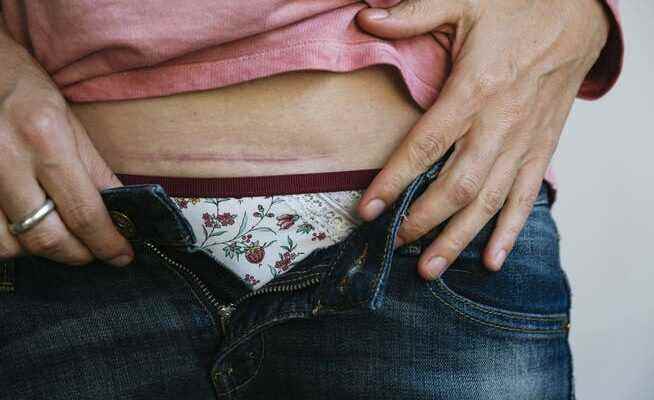The concept of caesarean section goes back to Caesar. But that could be a legend. On the other hand, it is undisputed that the “Sectio caesarea” should not be performed without necessity.
The scar as an unmistakable sign of a caesarean section.
According to legend, Caesar is the first known person to be born by caesarean section. Medical language pays tribute to this circumstance with the term «Sectio caesarea». However, it is rather unlikely that the Roman emperor actually had the knife of an obstetrician (or an obstetrician, because female healers were not uncommon in ancient Rome) paved the way into life. The fact that his mother survived the birth by almost half a century speaks against the truthfulness of the story.
Today, the caesarean section is one of the most common surgical interventions in medicine. In many countries, the proportion of cesarean births compared to vaginal, “natural” births has increased massively in recent decades. In Switzerland, for example, the 30 percent caesarean section rate is very high compared to other European countries, even though there has been a slight decline in the last five years. In some countries like Mexico, Brazil and China, the rate is even close to 50 percent.
The advantages and disadvantages of this development have been the subject of heated debate for a long time. In many cases, however, there are medical reasons that make a caesarean section advisable. The frequency of “desired c-sections” is probably overestimated, although these happen again and again. One also does not want to rule out the possibility that in very financially oriented healthcare systems, the far better rewards for caesarean sections may be a factor for one or the other doctor when advising women.
Pediatricians, on the other hand, are often skeptical about the high caesarean section rate. This skepticism will confirmed by a more recent study. For example, Spanish paediatricians have shown that children born by caesarean section later have a body mass index (BMI) that is too high more often than those born vaginally – or to put it in plain English: They are often too fat. The risk of becoming overweight is more than 30 percent higher for these children. The result of a so-called “within family” analysis was particularly impressive: children born by caesarean section had a 2.6 times higher risk of becoming overweight or obese than siblings born vaginally.
This is remarkable because within a family the external conditions such as nutrition are likely to be the same for all children. These results should be a wake-up call, according to pediatricians and neonatologists. In Germany, for example, the caesarean section rate has doubled in the last 30 years, while in Finland it is relatively constant at under 16 percent – and this even with lower infant and maternal mortality in the Nordic country.
Why caesarean children start life with an increased risk of being overweight has not been clearly clarified. It is assumed that the other birth path influences the composition of the bacteria in the intestines as well as the development of the immune system. Above all, being overweight is a long-term health hazard. Parents should bear in mind when planning the birth of their children that this can already be influenced at the beginning of life.
In the weekly column “Main thing, healthy” the authors take a personal look at topics from medicine, health, nutrition and fitness. Texts that have already been published can be found here.
Follow the science editors of the NZZ Twitter.
